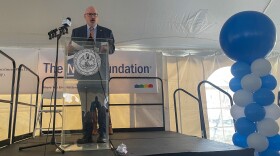Lord & Taylor, Brooks Brothers, J. Crew -- even Ann Taylor, whose first store opened in 1954 on Chapel Street in New Haven -- are among dozens of once-storied retail clothing institutions that have filed for bankruptcy.
Connecticut Public Radio’s Morning Edition host Diane Orson spoke with Jeffrey Sonnenfeld, senior associate dean and professor of management practice at the Yale School of Management, to learn more.
Here are highlights from their conversation:
What are some of the factors that have led to this?
We have, of course, the shutdowns of business where, because of the importance of quarantine and reduced commerce, we’ve seen the retailers have just lost an awful lot of pedestrian traffic.
The structural side, though, is the more profound disruption. As Jim McCann [CEO of 1-800-Flowers] said, “Everything that we thought would happen over the next five years evolutionarily is happening over the last five months. And we can be better for it.”
So, there were some who have a big e-tail business. But the old-fashioned brick-and-mortar retailers are not heavily anchored as e-tailers, and they’re having a big problem.
Mickey Drexler [former CEO of J. Crew and Gap Inc.], he’s so frustrated that there are places such as Amazon, and the Amazon third-party merchants that they’ll feature. They can see a beautiful J. Crew piece of merchandise that comes out one day, and in a matter of days have some offshore factory retooled and able to reproduce it, far inferior in quality. But that’s not apparent when you’re buying online. You don’t see the quality difference, you only see the price difference. And that’s really been hard.
And for office wear, how much is casual wear at the office and now the new pandemic work wardrobe changing shopping trends for that line of retail?
You’ve raised an important new avenue. In addition to what’s happened in the distribution process, the fashion itself has changed so much.
I have a big financial institution board call today, and we’re doing it all online. You couldn’t show up with a sport jacket for a man at that event, it was always a full suit. Now the men will be in some version of T-shirts -- which is shocking!
What will office wear retailers need to keep in mind in order to survive or succeed in the future?
It's going to be an intensely customer service-driven business to the point of differentiation. And, the importance of, in fashion, sometimes you get something that’s going to make you too wide or too long or out of step or whatever it is. You’ve really got to try it on.
It used to be the great legends of retail would try to sell the shopping experience with entertainment in the stores in the old John Wanamaker’s with organs and piano concerts. That’s not going to be the way to, I think, to sell that experience. It’s going to have to be -- what is the consumer advantage? They’ve got to figure out how to sell that.





